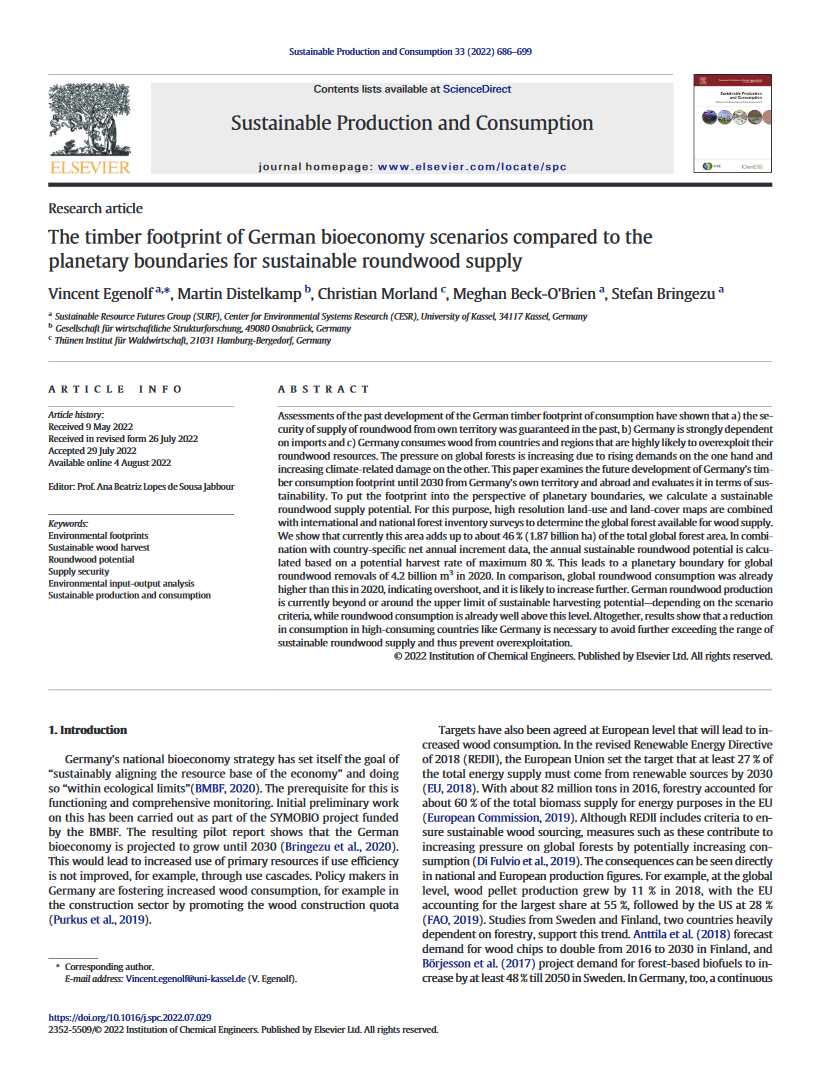Assessments of the past development of the German timber footprint of consumption have shown that a) the security of supply of roundwood from own territory was guaranteed in the past, b) Germany is strongly dependent on imports and c) Germany consumes wood from countries and regions that are highly likely to overexploit their roundwood resources. The pressure on global forests is increasing due to rising demands on the one hand and increasing climate-related damage on the other. This paper examines the future development of Germany's timber consumption footprint until 2030 from Germany's own territory and abroad and evaluates it in terms of sustainability. To put the footprint into the perspective of planetary boundaries, we calculate a sustainable roundwood supply potential. For this purpose, high resolution land-use and land-cover maps are combined with international and national forest inventory surveys to determine the global forest available for wood supply. We show that currently this area adds up to about 46 % (1.87 billion ha) of the total global forest area. In combination with country-specific net annual increment data, the annual sustainable roundwood potential is calculated based on a potential harvest rate of maximum 80 %. This leads to a planetary boundary for global roundwood removals of 4.2 billion m3 in 2020. In comparison, global roundwood consumption was already higher than this in 2020, indicating overshoot, and it is likely to increase further. German roundwood production is currently beyond or around the upper limit of sustainable harvesting potential—depending on the scenario criteria, while roundwood consumption is already well above this level. Altogether, results show that a reduction in consumption in high-consuming countries like Germany is necessary to avoid further exceeding the range of sustainable roundwood supply and thus prevent overexploitation.

